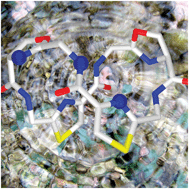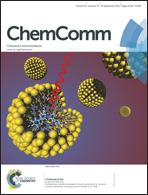The origins of cyanobactin chemistry and biology
Abstract
The correct structure of the symmetrical cyanobactin, ascidiacyclamide, was published in Chemical Communications by Hamamoto et al. in 1983. The cyanobactin family of compounds are cyclic peptides with modifications including azole/azoline rings, D-stereocentres and in some cases prenyl groups. Although related compounds were isolated earlier by Ireland et al., two of the three published structures later had to be corrected. Hamamoto's ascidiacyclamide structure assisted the understanding of the chemistry, bioactivity, biological origin and biosynthesis of this group of compounds. Cyanobactins are of interest as new chemotypes for the treatment of a range of diseases, in particular those in which extended binding sites are implicated.

- This article is part of the themed collection: Viewpoints

 Please wait while we load your content...
Please wait while we load your content...